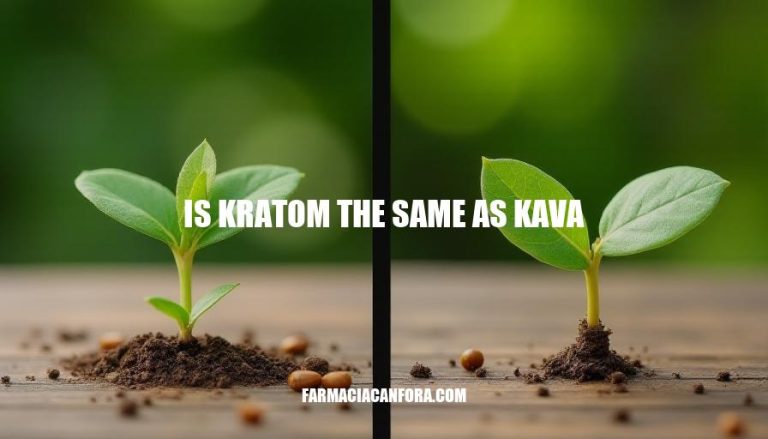


Is kratom the same as kava-show-up-in-a-drug-test”=””>kava-and-kratom”>kava? While both are natural herbs used for their calming effects, they are quite different. Kratom, from Southeast Asia, can act as both a stimulant and a sedative depending on the dose, while kava, from the Pacific Islands, is primarily used for its relaxing properties. Understanding these differences is crucial for making informed choices about their use, especially considering their varying effects and potential health implications.
Kratom and kava are distinct plants with unique origins and botanical characteristics.
Kratom is derived from the Mitragyna speciosa tree, which is native to Southeast Asia, particularly in countries like Thailand, Indonesia, and Malaysia. This tree belongs to the coffee family (Rubiaceae) and can grow up to 80 feet tall. The leaves of the kratom tree contain active compounds like mitragynine and 7-hydroxymitragynine, which interact with opioid receptors in the brain.
Kava, on the other hand, comes from the Piper methysticum plant, native to the Pacific Islands such as Fiji, Vanuatu, and Tonga. This plant is part of the pepper family (Piperaceae) and is a short, stocky shrub. The roots of the kava plant are used to produce a drink known for its calming and anxiolytic effects, thanks to compounds called kavalactones.
In summary, while both kratom and kava are used for their psychoactive properties, they come from different plant families and regions, and they have distinct active compounds and effects. So, kratom is not the same as kava.
Kratom and kava have distinct chemical compositions.
Kratom contains alkaloids, primarily mitragynine and 7-hydroxymitragynine. These alkaloids interact with the brain’s opioid receptors, producing effects that range from stimulation to sedation, depending on the dosage.
Kava, on the other hand, contains kavalactones. The main kavalactones include kavain, dihydrokavain, methysticin, dihydromethysticin, yangonin, and desmethoxyyangonin. These compounds primarily affect the central nervous system, promoting relaxation and reducing anxiety.
These differences in chemical composition clarify that kratom and kava are not the same. Kratom’s alkaloids interact with opioid receptors, leading to effects that can be similar to opioids, while kava’s kavalactones do not interact with these receptors and instead provide calming effects without the risk of opioid-like side effects.
Kratom and kava are both natural substances but have distinct effects and uses:
Legal Status of Kratom and Kava:
Kratom:
Kava:
Is Kratom the Same as Kava?
No, kratom and kava are not the same. While both are natural plant-based substances used for their psychoactive effects, they differ significantly:
Kratom and kava are not the same, despite both being natural plant-based substances used for their psychoactive effects.
The key differences lie in their origins, effects, and legal status.
Kratom comes from Southeast Asia and can act as a stimulant or sedative depending on the dose,
while kava is derived from the Pacific Islands and primarily used for its calming and anxiolytic effects.
Additionally, kratom faces more legal restrictions compared to kava, which is generally more widely accepted and regulated.
These distinct differences make it clear that kratom and kava are not interchangeable substances.